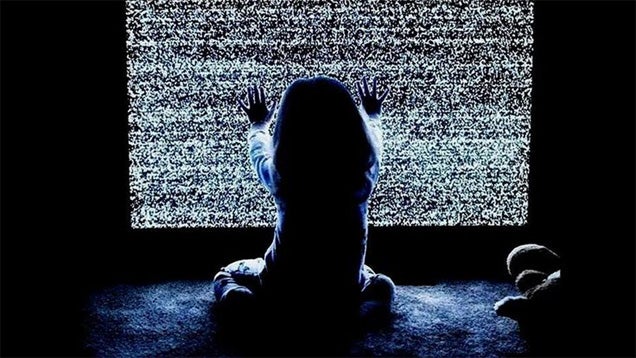
Of course Carol Ann’s name is now Madison.
Gil Kenan’s dickless remake of Steven Spielberg and Tobe Hooper’s 1982 classic Poltergeist is probably the most unnecessary redux in the perpetual cycle of horror remakes
yet. It always feels that way after watching yet another update that
doesn’t even appear to be trying to live up to its canonized source
material, but I really think this one’s the worst. Kenan’s remake rarely
deviates from the 1982 original except to update the technology—now
it’s iPhones and flatscreens that hiss with paranormal static. It’s as
though everyone figured that kids today would be befuddled at the
cathode ray tube that Carol Ann communicated through in the original and
the only way to tell this story to those kids is through the devices
with which they are familiar. It turns out that no device is more
horrifying than relying on old ideas to make new money.
Kenan’s Poltergeist
mostly serves to remind you of the original’s frequent brilliant ideas.
Back again are the scary tree that seems to be alive while thrashing in
the storm and then turns out to be so, ugly clown toys, and the kid
who’s afraid of “everything” and is right. The alterations here
are almost uniformly for the worst. The head ghostbuster in charge is
no longer a delightful little person with a funny voice (Zelda
Rubinstein) but a rather bland British guy with a few scars and reality
TV fame (Jared Harris as Carrigan Burke). There’s no face-peeling scene,
though patriarch Sam Rockwell does have a hallucination that has him
thinking he’s vomiting up earthworms into a sink for a moment. That
could be a reference to the giant worm Craig T. Nelson threw up in Poltergeist II: The Other Side just as easily as it could be a reference to current trends in composting. Who knows who cares.
A drone is deployed across space and time. A drone.
Griffin Bowen (Kyle Catlett) flies his iPad-controlled drone camera
into the dimension in which his younger sister Madison (Kennedi
Clements) is trapped so that the crew working to get her out can locate
her more easily. The vision for that plane of purgatory—a Geiger-esque
green-gray lattice work of writhing souls—is the best thing that this Poltergeist has going for it. And it’s captured by a drone. A drone.
We
watch that scene from the drone’s point of view, which gives the movie a
fleeting found-footage sensibility. So, if you ever wondered what the
unseen dimension in Poltergeist would have looked like through a shaky modern camera with a consumer price point, you now have your answer.
The original Poltergeist
was released in 1982, less than a year after the kidnapping of Adam
Walsh and a few years after the disappearance of Etan Patz. Through
media and milk cartons, it was clear in the early ‘80s that the world
was a stranger-dangerous place and Poltergeist offered the
fantasy of being able to communicate with your missing child and
eventually rescue her with your own arms. Thirty-three years later, the
cultural context for this Poltergeist remake is: haunted houses are the in thing in horror movies and found footage isn’t entirely obsolete yet. That’s it.
I do have to credit Kenan’s Poltergeist
for presenting the most hilarious jump scare I’ve ever seen: a
screaming squirrel that tears through Griffin’s attic room. We’re still
early into the summer movie season, but that’s twice now that a squirrel
has been the highlight of a shitty movie—the first happened in Hot Pursuit
when Reese Witherspoon’s coked-up character tells a story about how she
saw two squirrels kissing when she was 7 and watched them for way too
long. Maybe instead of remakes and haunted houses, Hollywood should
start focusing on squirrels. They’ve yet to have their day and they’re
way more interesting than this shit.
No comments:
Post a Comment